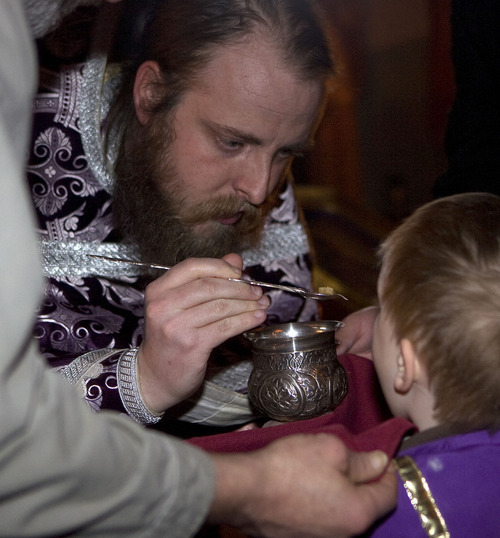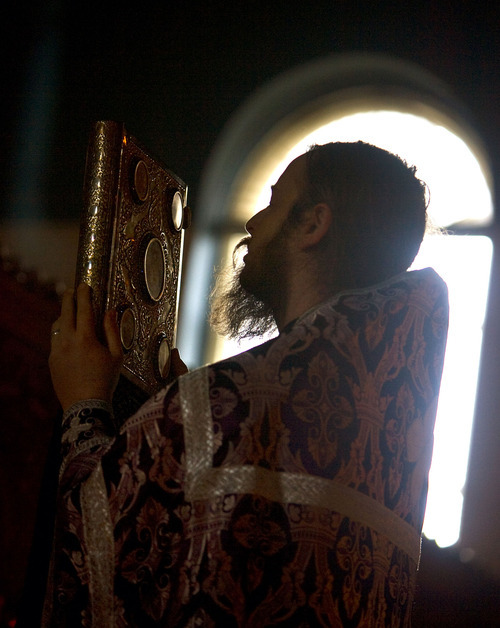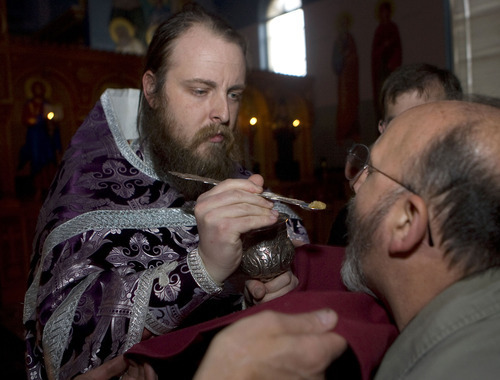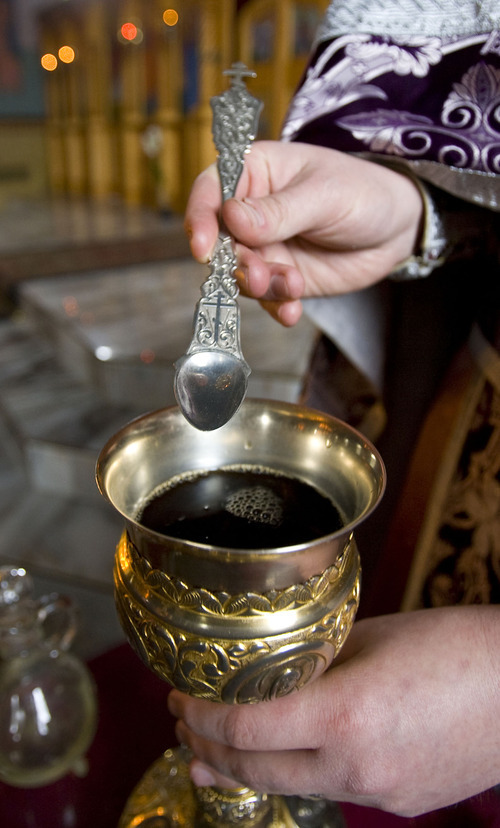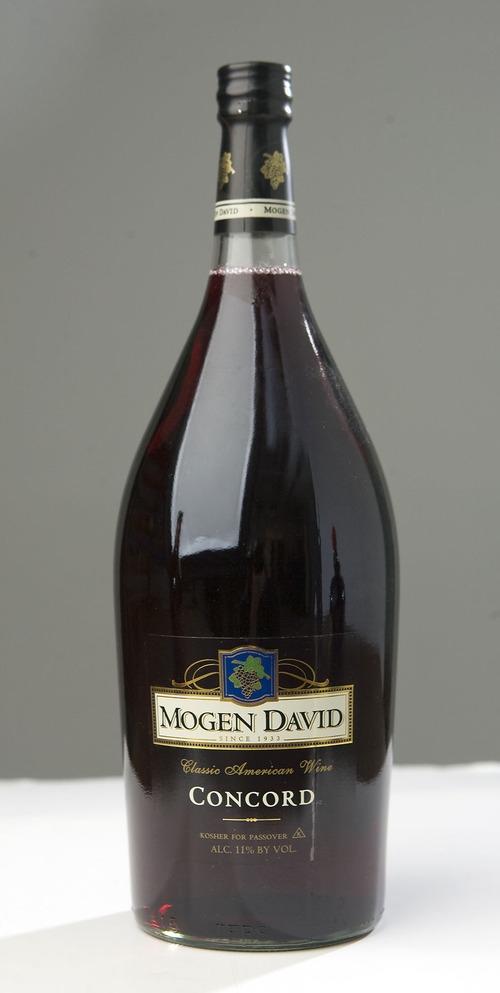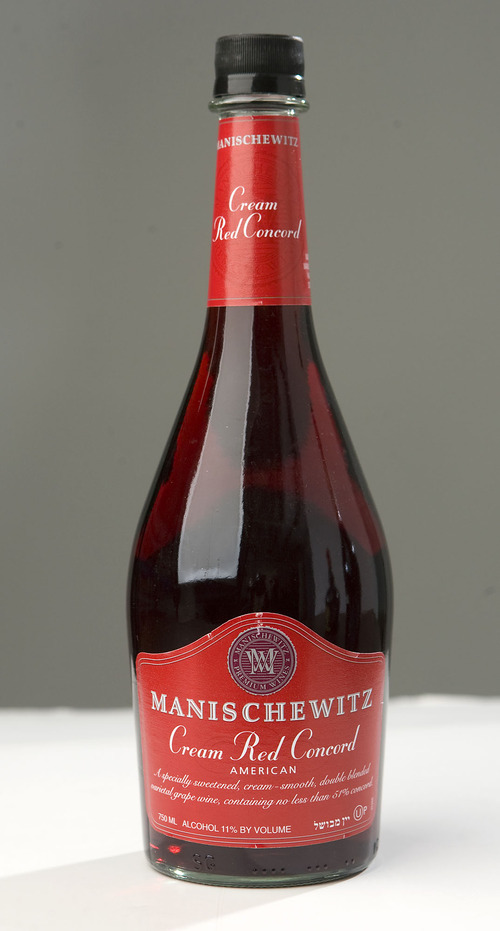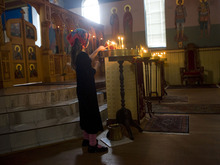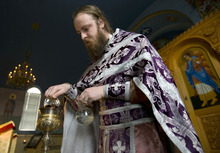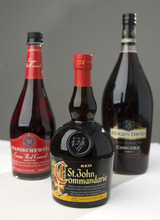This is an archived article that was published on sltrib.com in 2011, and information in the article may be outdated. It is provided only for personal research purposes and may not be reprinted.
Bread. Wine. Oil.
All three have a place in the sacred rituals of Jews and Christians, yet it is the intoxicating one — wine — that symbolizes celebration and, indeed, can put one in a festive mood.
That's why every Sabbath, Jews say a blessing and down a small cup of wine in the evening and the morning, and why, at seder meals in Jewish homes and synagogues during Passover, they raise their glasses in praise of God four times.
"Wine," says Rabbi Ilana Schwartzman of Congregation Kol Ami in Millcreek, "is a symbol of joy, and this is a joyous occasion."
That symbolism carried over into the early Christian church and today remains central to the liturgical celebration of the Eucharist, also known as Holy Communion, in which the communal chalice of wine expresses a sharing in the divine life and, as The Sacristy Manual for Catholics puts it, "spiritual inebriation."
The cultivation of vineyards, the pressing of grapes and the consumption of wine appear hundreds of times in scripture, chiefly in the Torah, which Christians call the Old Testament. Many mentions are neutral and simply describe Middle Eastern life in ancient times.
Other passages — and there are many — warn of the dangers of liking wine too much.
Yet it's impossible to read scripture and not see that wine is also a metaphor for God's gifts to man.
"A good harvest is seen as God's abundance," says the Rev. Mary June Nestler, the executive officer of the Episcopal Diocese of Utah. "Flowing wine is seen as God's abundance.
"It's the thing that's connected to life and happiness," says Nestler, who also oversees ministry formation for the diocese.
That's why many believers, Jews and Christians alike, never bought into anti-alcohol campaigns through the centuries, including the temperance movement that left its mark on so many religious congregations in the 19th and 20th centuries, particularly in the United States. Moderation, rather, was the model.
The center of rituals
Schwartzman laughs about the old observation that there was an unusually large number of "Rabbi O'Malleys" during Prohibition because Jews' ritual uses of wine were exempt from restrictive liquor laws.
Indeed, wine has always been part of Jewish tradition.
The Talmud, a centuries-old collection of doctrines and laws, prescribes that dark red wine be used during Passover, when Jews remember the angel of death passing over the firstborn sons of Israelites and the people's escape after centuries of bondage in Egypt.
The cup of wine is vital to the rituals of the seder, Schwartzman says. Besides raising cups for blessings four times during a seder meal, believers at one point raise their cups as if to drink, recall the suffering of the oppressed in the world and put down their cups, "realizing it's not a time to celebrate," Schwartzman says. "Another time, when we're listing the 10 plagues, we will take 10 drops [of wine] to diminish our joy for the sorrow of the Egyptians."
Wine is such a big part of Passover that the synagogue sells kosher wine for several weeks each spring in its gift store. "Even if people don't keep kosher the rest of the year," Schwartzman says, "people tend to observe the dietary laws in a particular way at Passover."
Small children often will drink grape juice instead of wine, and that's also an option for those who cannot tolerate alcohol, the rabbi says. The point is to use a drink that is special, out of the ordinary.
While Jews stress moderation in drink, a bit of overindulgence is encouraged during Purim, the feast that precedes Passover. Purim was in late March this year; Passover, which began Monday, ends Tuesday.
"On Purim, wine is drunk to help us forget the terrible experiences of the exile; the pogroms, the massacres, the concentration camps — the flight and the terror. On Pesach [Passover], wine is drunk to raise us to an exalted level," according to an article at the Orthodox Union website, a resource for Jews.
The grape juice substitute
Among Christians, the use of wine varies widely.
Orthodox Christians such as those who worship at Salt Lake City's Greek, Russian, Antiochian and Serbian Orthodox churches, as well as Catholics, always use wine in their Eucharistic celebrations, which reflect Jesus Christ's injunction to his followers at the Last Supper to eat bread and drink wine in remembrance of him.
The Last Supper was commemorated Thursday night by Christian churches, just as his crucifixion was remembered Friday and his resurrection will be celebrated Sunday.
Lutherans and Episcopalians, who sometimes offer grape juice as an alternative for worshippers who cannot imbibe, use wine for their communions as well.
The use of wine and a common communion cup generally coincides with belief in "real presence." The wine and bread become — through the action of the priest, believers and God — the true body and blood of Christ, not mere symbols.
"We take Christ at his word. It goes beyond a symbol for us," says the Rev. Justin Havens, pastor of Saints Peter and Paul Orthodox Christian Church in Salt Lake City.
Protestants vary widely in their practices, just as they do in their beliefs about what Jesus intended at the Last Supper — to leave his followers a symbolic act of remembrance or an actual way he would remain with them.
Methodists credit Thomas and Charles Welch, Methodist ministers who figured out how to pasteurize — and market — grape juice, with the church's switch to grape juice for communion services in the late 19th century.
The United Methodist Book of Worship notes that the use of grape juice today "expresses pastoral concern for recovering alcoholics, enables the participation of children and youth, and supports the church's witness of abstinence."
The Rev. Marti Zimmerman, pastor of Christ United Methodist Church in Salt Lake City, says she has never served in a church that used wine, although grape juice is not always available either. While a missionary in Chile, she resorted to pressing raisins for juice to conduct services in remote villages.
The Church of Jesus Christ of Latter-day Saints used wine for its sacrament early in its 19th-century history.
Within a few months of the church's founding, though, Joseph Smith had a revelation directing church members not to buy wine or strong drink and explaining that wine was not necessary for the symbolism of the sacrament.
The church often tried to make wine during the 19th century, but at the height of the temperance movement, and guided by the Word of Wisdom's injunction against alcohol, LDS congregations increasingly substituted water for wine. The use of water for the Mormon sacrament became official church policy in the early 20th century.
Through the years, many teetotaling Christians have contended that the wine depicted as good in the Bible — such as the six pots of water that Jesus turned into wine at the wedding in Cana — must have been grape juice.
But Nestler, an Episcopal priest as well as an archaeologist involved in an ongoing dig in the Holy Land, says there is "no archaeological or textual evidence for it being just grape juice."
There is ample evidence in the physical record of Middle East inhabitants growing, pressing and fermenting grapes. "Archaeologists have been able to recover dregs from ancient vessels," Nestler says, "and it is clearly something that has been fermented."
Adding bread to wine
"We use wine because that's what Jesus used," says the Rev. James Wakefield, a pastor at Good Shepherd Lutheran Church in Sandy.
And though most Lutherans believe Christ is truly present in the bread and wine, they also regard the liturgy, in a sense, as a drama.
"When you're doing a drama," Wakefield says, "it helps if the props are as close as possible."
At Good Shepherd, the pastors typically offer a second cup containing a light grape juice, denoted either with a ribbon or by its color, for children or adults who don't drink.
The communion wine is sweet, such as the kosher Mogen David. "Red wine is closer to the symbol," Wakefield says, "so we try to stay with that."
Any left over after communion is put back into the ground; at that point, Wakefield says, it is no longer considered to be the blood of Christ.
It has been only in recent decades that Catholics again could sip from the communion cup.
For centuries, the church reserved the cup for the priest celebrating the Mass, a practice with roots in the Middle Ages when there were fears of spillage of what is believed to be "precious blood." People in the pews were given the hosts and assured that they were receiving the entire "body, blood, soul and divinity" of Christ, though it was under the appearance of bread alone.
Increasingly in the 20th century, though, the church realized there is greater symbolism in the reception of communion under both bread and wine, says Timothy Johnston, director of liturgy for the Salt Lake City Diocese.
"It's a sign of ... the fullness of what this sacrificial meal is all about," says Johnston. Today, Catholic parishes in this region distribute both forms of communion most of the time.
Priests who are alcoholics can get their bishop's permission to use "mustum," the juice made during the first step of wine-making, before it is fermented. In those cases, only the priest drinks from that cup, while those in the pews drink from the chalice filled with wine during the liturgy.
The Catholic and Orthodox churches have strict rubrics about cleaning the chalices and implements used in communion so that no crumbs or drops of liquid are left.
"It's considered so holy," Havens says, "we're very careful about it not spilling."
In Orthodox churches, he adds, every bit of the precious blood must be consumed during the divine liturgy or afterward.
Every Catholic church is equipped with a "sacrarium," a sink draining directly to the ground in the "extremely rare" case the blood is not all consumed, Johnston says.
While Catholics can use red or white wine, Orthodox priests must use wine that is deep red in color to resemble blood, Havens says. Most of Salt Lake City's Orthodox churches buy wine imported from Cyprus.
Even before the divine liturgy begins, Havens says, the priest is entering the "mystery" of Christ's death.
In a preparation ritual, the priest stands at the altar and mixes wine from one chalice with water from another. He pierces the bread with a lance, symbolizing the soldier's sword that pierced Christ's side on Calvary, causing water and blood to flow. While doing this, the priest recites these words:
"One of the soldiers pierced his holy side with a spear, and at once there came forth blood and water."
"That's very, very ancient and it's very, very beautiful," Havens says. "Our understanding is we're not just putting on a play to remember old events. We're actually entering into that reality. We are there at the feet of Christ."
Liquor laws and sacrament wine
The Utah Code exempts religious organizations from Utah's liquor laws, which means they can provide alcohol to any person as part of religious services without a permit.
But religious organizations have to buy their sacramental wine through the Utah Department of Alcoholic Beverage Control, says spokeswoman Vickie Ashby.
The state makes no profit off religious organizations and sells the wine at cost, she says. For social events, religious organizations must get special permits.
In some cases, churches, synagogues or others will request the DABC order a case of a particular wine; other times, they will order the wine online. In any case, it has to be delivered to the DABC, she says.
Churches and synagogues typically choose sweet, dessert wines — and often buy them off the shelf in state liquor stores.
Members of the Orthodox community especially like wines from Greece or Cyprus, and the DABC has been good about securing those, says the Rev. Justin Havens, pastor of Saints Peter and Paul Antiochian Christian Church in Salt Lake City.
"It's nice," he says, "that even in Utah you can have a traditional wine that is for the Eucharist."
Kristen Moulton



